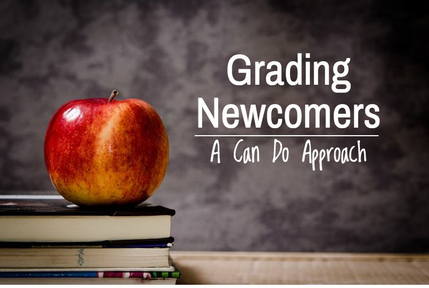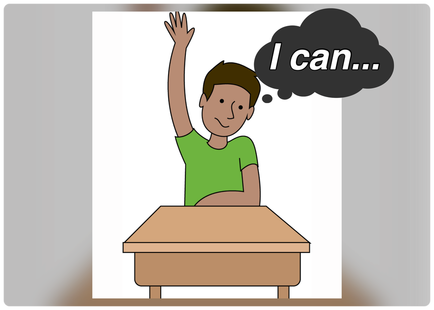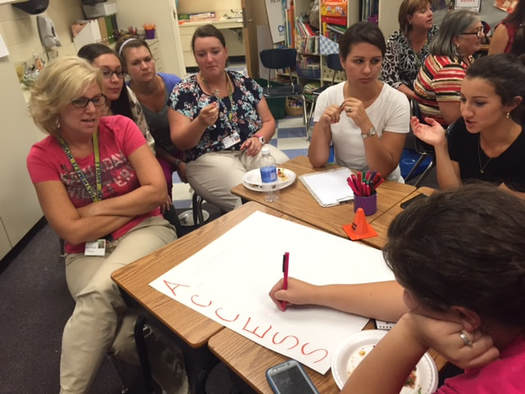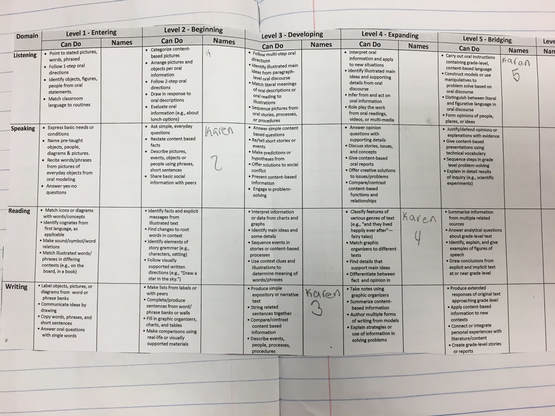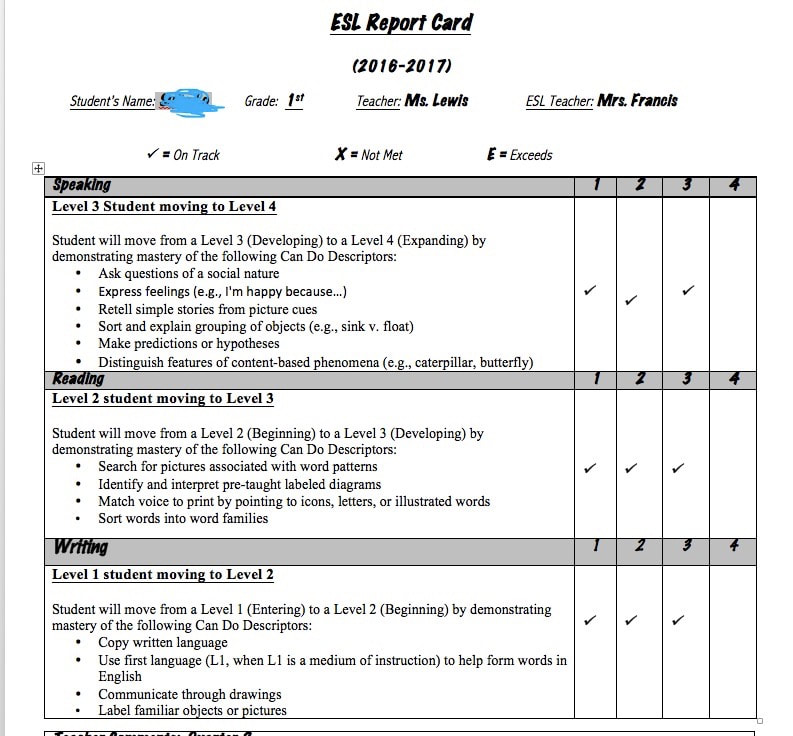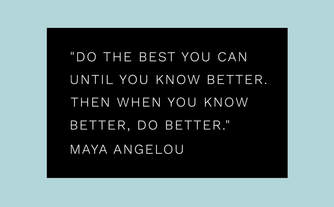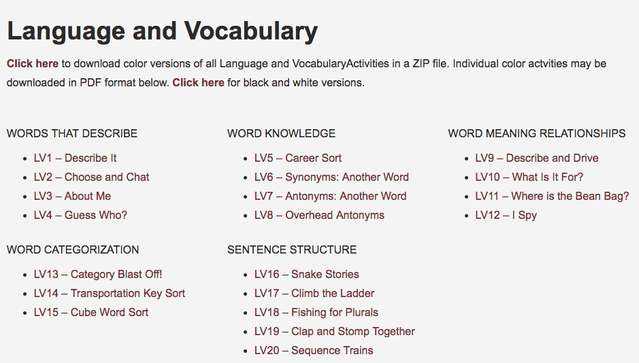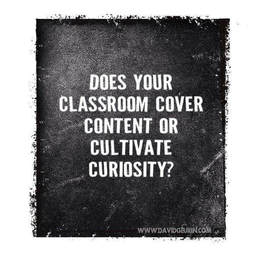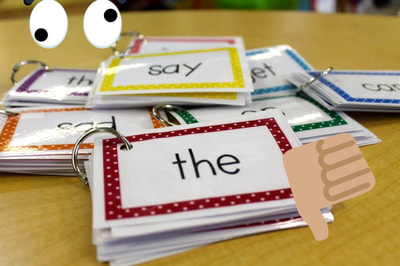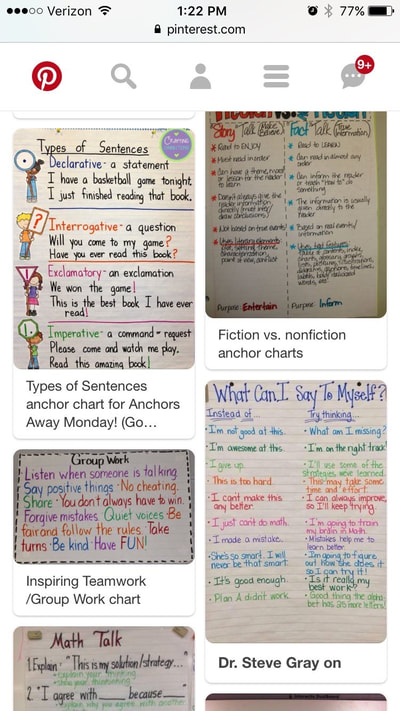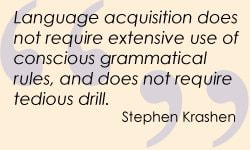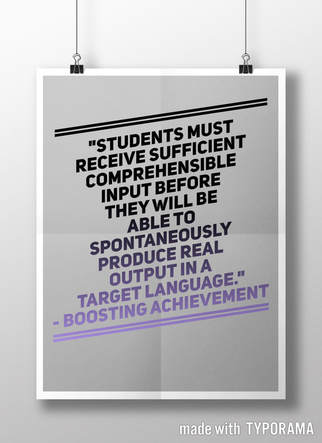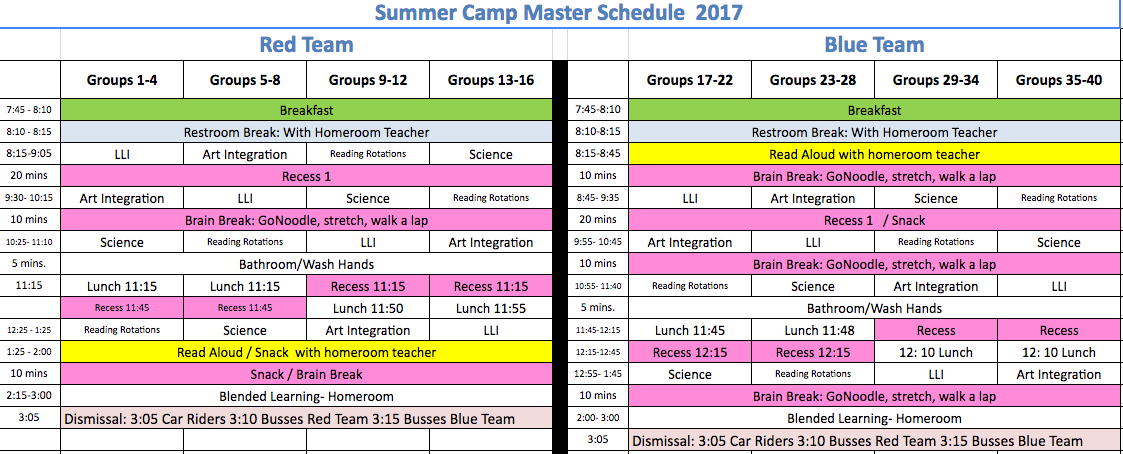|
Tan Huynh invited me to guest post on his website about my methods on grading English language learners and newcomer students. **This post appeared originally in www.empoweringELLs.com on August 7, 2017.** As an English as Second Language (ESL) teacher, my job is to analyze my students’ needs and develop their linguistic and communicative competence in English-speaking, reading, listening, and writing skills. My goal is to help them achieve a proficient level of English that allows them to function independently in their classrooms, and in society in the future. To help me accomplish my goal and perform my job as an ESL teacher I have the WIDA (World-Class Instructional Design and Assessment). North Carolina is part of the WIDA consortium of states dedicated to the design and implementation of standards and equitable educational opportunities for English Learners (ELs). As an ESL teacher, I use WIDA standards along with Common Core State Standards to
Undoubtedly, one immeasurable reward I find in being an ESL teacher is seeing my students reach a high proficiency level of English and to be able to function independently in core instruction. So, merging my personal experiences as an EL with my obligations as an educator, I see the critical need and responsibility to serve as an advocate for my students. Thus, I use the WIDA Can Do Descriptors! The Can DO Descriptors provide a clear and basic overview of ELs’ ability based on their initial or annual language proficiency test. This powerful document highlights what our ELs CAN do at various stages of the language development and for each language domain as they interact with core content. I encourage you to take advantage of these valuable documents that by the way are free through the WIDA website. Even if your state is not a WIDA state, these documents can be a great tool not only for you as an ESL teacher, but also for mainstream classroom teachers, students, and parents! TIP #1: Share the CAN Do Descriptors with Mainstream Classroom Teachers.At the beginning of the each school year, I gather all the teachers at my school and we go over ACCESS, CAN DOs, accommodations, and modifications. For teacher buy in, I make sure my presentation is fun and engaging. I begin by giving them the acronym ‘ACCESS’ (Assessing Comprehension and Communication in English State-to-State) and they have to guess as a group what each letter stands for. The group who gets most letters correct gets a small price! Teachers learn how to read their students’ language proficiency levels and use the CAN Do name charts to chart each student in his/her corresponding proficiency level for each language domain. These are the name charts we use: Kindergarten, First grade, Second-Third, Fourth-Fifth. Higher grades are also available on the WIDA website. Teachers understand that even though students receive a proficiency composite score, it’s imperative to see which domain is the student’s strength and/or weakness to better support during instruction. Teachers also receive this document that provides linguistic accommodations teachers can use to support students access core without having to water down content. This other document is also helpful since it provides Bloom’s Taxonomy questions differentiated by language proficiency level. TIP #2: Share the CAN DO Descriptors with your StudentsThis year I started sharing with my students not only their ACCESS scores but also the CAN DO Descriptors. I never thought how exciting this would be for all my students. They all loved looking at their scores and charting their name on the appropriate proficiency level for each language domain. You could hear students say: “Look, I am really high in speaking!” or “Look, I really need to work on my writing.” Students received two highlighters, one to highlight the current CAN DO statements, and another one to highlight the goal we set for next school year. Their CAN DO chart is glued in their daily notebook so when we used them they can see it and be encouraged. Next school year, I will be using this student friendly CAN DO charts. Not only are they colorful, but they’re much better for them to read and understand. I believe without a doubt that students need to be explicitly taught the expectation we have of them from the very beginning. My students understand that their teacher, their parents, and I know exactly what they can and cannot do.They have a clear understanding and a visual of where they are linguistically and where my goal is for them to be by the end of the school year. They know that I will be reporting quarterly to teachers and parents how they are progressing toward their language proficiency goals. TIP #3: Share the CAN DO Descriptors with Parents: Yes, you read this right...share it with your student’s parents! The CAN DO Descriptors are such a powerful tool for teachers and students that this year I decided to start sharing it with parents through a progress report format. Let me elaborate; When I get my students’ ACCESS scores, I analyze each and every student’s data to determine their school year language goal. It’s really all about getting to know your students to better support them in the language domains they need it most. For example: If Emily’s ACCESS report states that she made a 3 in speaking, then her goal for the year would be to master the 3 and make it to a 4. If she made a 2 in reading, her goal for the year would be a 3...so on and so forth. If a student makes a 5 or 6, then there is no goal assigned for that domain since the student had shown mastery on the domain. A student could have 1 - 4 goals depending on his/her language proficiency. In order to have parent support in helping their child grow linguistically and academically, I provide them with a quarterly progress report that lets them know how they are doing throughout the year. Teachers may also get this report if they wish to see how their student is doing in ESL. I make the effort to honor my students’ family language by translating their progress reports. WIDA has the descriptors available in Spanish if you wish to use them! I know for a fact that our parents would appreciate receiving such valuable document in their native language. Take a look at this example! Our county is fortunate to use ELLevation, an online platform that houses our ELs’ data information and provides language strategies. It is through this platform that we can assign students’ language goals and note their progress. The ELLevation goal bank offers goals for newcomers as well! This allows me to provide a report for students who are just entering the language proficiency levels spectrum. It also gives me an idea of what I should be focusing on students who are new to the English language. These are the progress reports I use. Feel free to download, edit, and use as you like. I won’t lie to you...it takes some work to put them together but in the end, it is all worth it because you’re providing accurate and helpful information to your students, teachers, and parents. As you can see, there is so much we can get out of such a valuable document such as the Can Do Descriptors! Now you know that not only is a tool that we can use as ESL teachers to support the students we serve, but it CAN be so much more! Our students CAN DO...Let’s show that they can! If you are on Twitter, join us by posting ELLs’ success stories using #ELs_CAN so we can celebrate with you! **Updated 08/20/17 Added middle school grades and high school ESL progress reports Thank you for reading!
21 Comments
Part IV: Implementing a Practical Approach to Instruction
I am not the teacher I was six years ago when I started my teaching profession. I am better. No, I'm not bragging! When I started teaching, I did the best I could with what I had learned. Not everything I did was good. Not everything I did helped my students...UNTIL...that is the key. As an educator, I do what I think is best for my students...UNTIL I know better. Learning and practicing what's best for my students IS what makes me a better teacher.
Over the years I have learned strategies and methods to better support, my students. I have built a professional learning network that is constantly providing ideas and fresh approaches to better serve my students. So because I know better, I DO better! By no means think that I have it all figured out...on the contrary...I continue learning so I can become the best I can be for my students.
When it comes to implementing practical and effective strategies to support language learners, you must know that what works for one student may not work for another. It is very important for you to know your student. Knowing their reading level is NOT enough. A level doesn't tell you about their personality. A level doesn't show you how they learn. In order to close any academic gap, there needs to be a specific target area to support. For our language learners...LANGUAGE is the target you need to focus on. If you are interested in how to support your language learners with language interventions, read this article by Kristina Robertson.
If you have students who are just beginning to acquire English, fear not. In Boosting Achievement we learn that newcomers can engage in certain tasks to be able to participate in the content provided in class. Your newcomers can:
If your student is a newcomer, the first thing you want to find out is the literacy level in native language because you'll use that to build second language acquisition. Read one of my recent post about a newcomer who grew almost two grade levels in reading just by allowing him to use their native language.
WIDA Consortium has this document that I know you'll find helpful. You'll gain tips about getting to know your newcomers and ways to support them not only in school but also in the community. I also encourage you to read "28. Comprehensible Output: What Students Can Do" by Tan Huynh (@TanELLclassroom). Tan provides tip and strategies to deliver lessons in a way that your students comprehend it as well as support students with output process.
My Flipgrid response was based on Boosting Achievement's section on balanced literacy. I believe it is imperative to teach our students the structures of the English language. Language learners need explicit phonological awareness lessons. These lessons could be quick daily interventions where students learn vowel teams, consonant blends, dominant -r, etc. They need to understand the many combinations of alphabet letters to make words and how words make sentences.
One great website to find "research proven" interventions for these type of foundations is: Florida Center for Reading Research. Here you'll find student centered activities by grade level along with teacher resource guides to focus on language foundations.
If you're more like me and want to provide a hands-on activity to develop your students' language acquisition, I recommend the interventions below. The lessons are designed for pre-K students but work well for students who are just developing language.
Since word-work and learning about the language are only part of the balanced literacy approach, the rest of it needs to be compelling text. As learned in Part III, students need to be exposed to text that is compelling and engaging for them to acquire language. Text must be relevant and must reflect who your students are so they can make connections and be motivated to learn even more.
So to finish up I want to thank you for all you do for your students. I have no doubt in my mind that to this day you have done everything in your power to support your students. However, there is always room for more learning. As you learn new methods and strategies, you'll gain better ways to serve your students and be an even greater teacher!
Thank you for reading!
Part III - Accelerating Language Development
Ever since I began taking TESOL courses I have been intrigued with the concept of Second Language Acquisition (SLA). Promoting Academic Success for ESL Students: Understanding Second Language Acquisition for School was the first book, I read (and still own) about this topic. In this book I learned that "SLA is best developed through contextual, meaningful activities that focus on language use combined with guidance along the way from teachers." Even though linguistic experts have been sharing this theory for several years, I am shocked at the misunderstanding and misconceptions among educators regarding SLA. As educators, we must have a clear understanding of how our language learners acquire language. Boosting Achievement calls this understanding, "Best practices" - Foundation of lessons we plan to provide effective opportunities for language development. Read more about this topic and learn about using the Prism Model.
Factors in Second Language Acquisition
Boosting Achievement targets two very important factors I see needing improvement in our schools. In my opinion, if we improve in these two areas, we could see achievement gaps closing among our language learners.
The reason these two factors are important is that they can make a good teacher into a GREAT teacher. This goes back to the questions in the image above; "Does your classroom cover content or cultivate curiosity?"
A Good Teacher: The Washington Post shared an article providing a pretty accurate list of qualities great teachers share. However, it doesn't highlight some of the teaching strategies and methods good teachers use. For example sight word list drills, amazing anchor charts, and content.
I do believe sight words are important; “sight words account for up to 75% of the words used in beginning children’s printed material”, read this post on Why are Sight Words Important.
I also believe how imperative anchor charts are in the classroom! Read more about why in this article: Anchor Charts: Making Thinking Visible. I also understand that as an educator, you are responsible for teaching "CONTENT". Believe me, I get it. I even use the High Noon Intervention program that provides word lists and word patterns for students to learn in my class. However, what I don't get is the need to kill students with word drills and memorizing a ton of words in isolation. What I don't get is the need to post gorgeous anchor charts already pre-made when students can't even read them. What I don't get is how we can just be happy sharing the content we are excited and knowledgeable about without engaging students' curiosity. If you do all this...GOOD! You are a GOOD teacher. You are doing your job. You are helping students "learn". However, when it comes to supporting English language learners, students need more than just "learn". Students need to acquire language. Students need YOU to be GREAT!
A Great Teacher:
A great teacher gains understanding regarding the concepts mentioned above, AND will also apply them as a foundation for lesson planning to provide language learners with the opportunities they need to acquire the targeted language. A great teacher will have all the qualities mentioned above and will also do the strategies mention above; however, "Comprehensible Input" and "Affective Filter" are visible. A great teacher understands that in order for students to acquire the language there needs to have "a focus on providing many opportunities for oral and written interaction rather than intensely focusing on vocabulary lists and finer points of grammar." (pg. 50) Great teachers also make it possible to provide a safe and comfortable environment where students feel free to make mistakes while learning the language. A great teacher also allows students to engage in creating anchor charts to they CAN read it when they need to refer to it. Remember, anchor charts are resources for students, not pretty wall paper for your classrooms. Here is a great post by Valentina Gonzalez about strategies to support ELs. One of her strategies is the proper use of anchor charts with our language learners.
Here are some examples of my students engaging in text and word-work and you be the judge; Am I a good teacher or a great teacher?!? Then, reflect on your profession. Are you a good or a GREAT teacher?!?
I am so grateful to see Boosting Achievement setting the expectation needed of all language and content teachers. Just like we have high expectations for our students, we need to have high expectations of ourselves. Let's continue learning and improving our pedagogy to better serve our language learners.
Thank you for reading!

If you know me, you'd know how much I LOVE my job. Teaching, is to me, more than a job, or a profession...teaching to me is a calling...my passion! That's why every summer for the past four years, I've signed up to work in my county's Summer Reading Camp.
This camp is only 3-4 weeks long and it's right in between summer break so it's just perfect. I get a break right after the end of the school year and a break before the beginning of the next school year. Families receive an invitation to register for Summer Reading Camp after EOG. Not all students are invited and/or admitted to camp. Our camp is mainly to support students who are not far below grade level in reading. Also for 3rd-grade students who did not pass the End of Grade Testing and did not meet the targeted reading level. Transportation and meals are provided to all students. Here's an idea of what their day looks like:
So basically students have rotation centers: Art integration, Science, Reading Rotation, and Leveled Literacy Intervention (LLI). Each rotation is about 45 minutes. We take our group to lunch and recess. We also have a block for read-aloud, iReady (computer time), and brain breaks/bathroom breaks. It sounds confusing, but I promise it works out perfectly!
My Assignment:
My assignment has always been LLI. Leveled Literacy Intervention system is an intensive, small-group, supplementary literacy intervention for students who find reading and writing difficult.
I find this system fascinating because it provides a teachers guide and teaching ideas to make reading and writing very interactive promoting student engagement. Not to mention it also provides strong support for English language learning students. Small group instruction for reading and writing is by far my strength! So, even though I appreciate having a guided lesson plan for each book we read, I always end up adding my own twist. Lessons:
Learning about each other: In order to establish a safe and comfortable environment for all my students, we started with an activity where students learned about each other's likes. I placed a poster board sheet in the middle of the table and explained how we are different and similar in many ways. I wrote our group number in the middle and our names branching out from the center. I modeled writing around my name things I like doing or anything I like about me. I modeled sounding out words how it was ok if words were misspelled. Students immediately started brainstorming ideas and adding them to their name. The ending results were amazing!
Why do this activity?!?
Of course, first things first, I wanted to get to know my new students! But this activity turned out to be a great formative assessment. My intentions were to grasp an idea of their writing, reading, speaking, and listening skills. This was a very low anxiety activity where students felt comfortable making mistakes and taking risks in using English. Without my students knowing I was proving them with a scaffolding approach to write complete sentences about themselves. The Writing Process: A Scaffolding Approach is a process to organize writing to meet the needs of your struggling readers and writers.
Vowel Sounds, Word Patterns, and Word-List:
For students who are struggling with vowel sound discrimination, reading grade level text is a torture. Being able to recognize the sound a vowel or a team vowel makes is foundational for readers. Kindergarten through 2nd grade are the grades where students need to master recognizing team vowels sounds and their patterns for written purposes. A student in 3rd grade on should be reading to learn and not having to struggle with phonic foundations. Now for ELL students to achieve high levels of fluency in English, they need to receive sufficient amounts of oral and written input as well as opportunities to express themselves orally and/or in writing. Process:
After reading a story, students get a list of random words taken from the story read and they are to use all of the words to make sentences. The sentences are about what happened in the text so they are familiar with the vocabulary. They are also allowed to look in the text to make sentences. These students here made 5 different sentences! They take turns circling the words needed for each sentence. The final product looks very colorful and they feel very accomplished!
Writing about text:
Here is a great link for tips for using prewriting strategies. Here is another document with great ideas for prewriting strategies.
I had such a great time this summer learning along with my students. I am already looking forward to next summer camp!
Link to all tweets related to our summer school experience!
Thank you for reading!
|
Categories
All
Archives
May 2024
|
